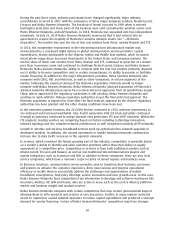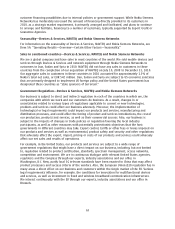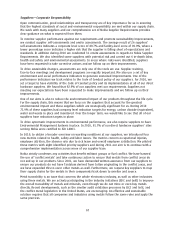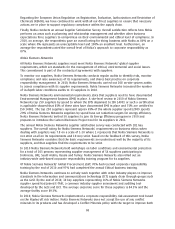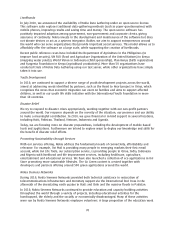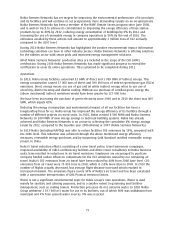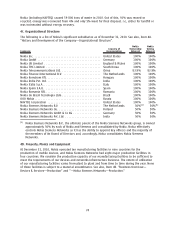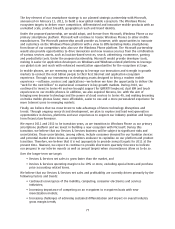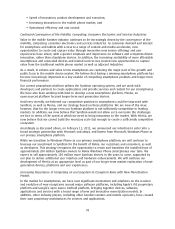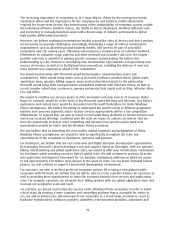Nokia 2010 Annual Report Download - page 70
Download and view the complete annual report
Please find page 70 of the 2010 Nokia annual report below. You can navigate through the pages in the report by either clicking on the pages listed below, or by using the keyword search tool below to find specific information within the annual report.the traceability of minerals and the transparency of global supply chains. Communication of the policy
to suppliers started in 2010.
Society—Corporate Responsibility
Corporate Social Investment Strategy
Used by the vast majority of the world’s population, mobile phones have become recognized as a
useful means by which to deliver critical social services. As a result, Nokia has reshaped its corporate
social investment strategy to target the use of mobile technology for development. Our goal is not
only to help people on a scale that is proportional to our business but to make the social benefit of
mobile technology axiomatic.
Our work is targeted to address education, health and livelihoods, with a focus on education, and our
investment prioritizes concepts that can be financially sustainable or deliver enduring value to
society. In the following sections, we outline the focus areas of our investment.
Education
The most urgent priority in the area of education is to ensure access to, and improve the quality of,
education for girls and women, and to remove every obstacle that hampers their active participation.
To that end, mobile phones can offer individualized learning for every person, irrespective of gender.
Concepts such as Ovi Life Tools, our expanding subscriptionbased service, show that education can be
delivered on a large scale, in a way that is financially viable. We have also developed, or are
participating in, more initiatives specifically related to education. These include:
• Our fiveyear partnership with UNESCO, initiated in October 2010. The partnership aims to
harness mobile communication to serve individuals and support governments as they strive to
achieve the goals of the World Declaration of Education for All. The target date for these
objectives to be reached is 2015 and our partnership with UNESCO has been structured
accordingly. Nokia is contributing expertise relating to technology and policy setting in this
area.
• Nokia Education Delivery, software which enables the structured delivery of quality education
materials over mobile networks. Combined with teacher training and community engagement,
this software has been shown to improve academic results and increase retention among
students, especially girls. During 2010, the concept expanded to two additional countries, Chile
and Colombia. This built on earlier projects in the Philippines and Tanzania.
• A South African project for individualized mobile learning, which reached a stage of maturity
and success in 2010. The concept uses Mxit, a popular social media channel as a means to
deliver mathematics education. Importantly, it harnesses the social networking element of the
channel to engage students around learning content. The project covers 30 schools and more
than 4 000 students across South Africa, and helps teachers and learners deliver a marked
improvement in academic achievement.
Health
In 2010, we commenced trials of a concept that uses mobile networks and social networks to
increase adherence to courses of prescribed medicines. The costs of failing to adhere to a course of
medicine can be significant, in personal terms and for the public, so a successful proof of concept
would be significant. Funded by the Brazilian government, the project is being carried out in Belo
Horizonte and we expect information on the outcomes by mid2011. We anticipate that future social
investments in health will be more educational in nature, targeted at early childhood care and
development.
69





